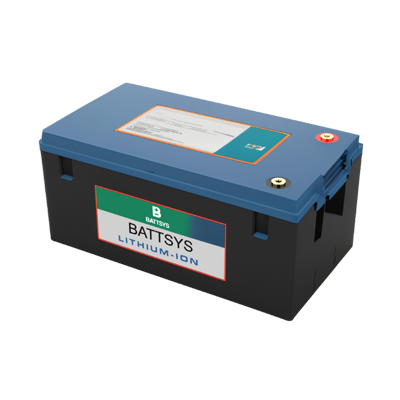The difference between
lithium batteries and lead-acid batteries is well known. Lithium batteries and lead-acid batteries have been applied in various aspects of people's lives. However, some consumers are not very familiar with the differences between the two. Here, we will briefly discuss the differences between the two, hoping to provide some help to everyone. "Lithium batteries" are a type of battery made of lithium metal or lithium alloy as the negative electrode material, using non-aqueous electrolyte solutions. Due to the active chemical properties of lithium metal, the processing, storage, and use of lithium metal have very high environmental requirements. Therefore, lithium batteries have not been applied for a long time. With the development of science and technology, lithium batteries have become the mainstream. Lithium batteries can be roughly divided into two types: lithium metal batteries and lithium-ion batteries. Lithium ion batteries do not contain metallic lithium. And it is a rechargeable lead-acid battery (VRLA) A lead-acid battery is a type of electrode mainly made of lead and its oxides. The electrolyte is a sulfuric acid solution. In the discharge state of a lead-acid battery, the main component of the positive electrode is lead dioxide, and the main component of the negative electrode is lead; In the charging state, the main components of the positive and negative poles are the difference between lithium lead sulfate batteries and lead-acid batteries
1、 Durable lead-acid batteries generally have a memory of up to 400 deep charges and discharges, with a lifespan of about two years. If a maintenance free lead-acid battery is used, it should be noted that the battery loses less water and does not require the addition of distilled water during use. Lithium batteries have strong durability, slow consumption, over 500 charges and discharges, and no memory, with a general lifespan of 4-5 years

2、 In terms of volume and quality, lead-acid battery packs generally weigh 16-30 kilograms, which is relatively large in volume; Lithium batteries are generally used in
2.5-3 kilograms, relatively small in size, making it easy to ride and transport, like Tianneng's lithium-ion battery for electric bicycles. This is a power battery specially designed and developed by Tianneng for electric bicycles, electric bicycles, and electric motorcycles. The product has multiple national patented technologies, making it a safe, environmentally friendly, lightweight, and long-life lithium-ion battery. This product has a high cost performance ratio and is highly competitive among similar products
3、 In terms of price and warranty period, the mainstream battery on the market is currently 48 volts. If replaced, lead-acid batteries cost around 450 yuan with a warranty period of 1 year; Lithium batteries are relatively expensive, costing around 1000 yuan, but with a two-year warranty period
4、 Both lead-acid and lithium-ion electric vehicles can travel 30-40 kilometers on a fully charged 48V battery when driving kilometers
5、 The battery capacity of lead-acid batteries is about 20 amperes; Lithium ion batteries have a capacity of 8-10 amps
6、 In terms of production and recycling, environmentally friendly lithium batteries are relatively more environmentally friendly. However, after the country issued the "Entry Conditions for Lead Acid Battery Industry" in 2012, the lead-acid industry has undergone restructuring and integration. Most manufacturers have adopted internalized cadmium and arsenic free green production, which is more environmentally friendly and energy-efficient. For example, products under Tianneng batteries, lead-acid power batteries have a reliable fully sealed structure design, use unique colloidal electrolytes, no leakage or acid mist, and are reliable and safe when placed and used in any direction. They belong to the national green and environmentally friendly new energy products. Currently, there are a variety of battery products on the market, and consumers should choose trustworthy brand batteries whether they choose
lithium batteries or lead-acid batteries.
